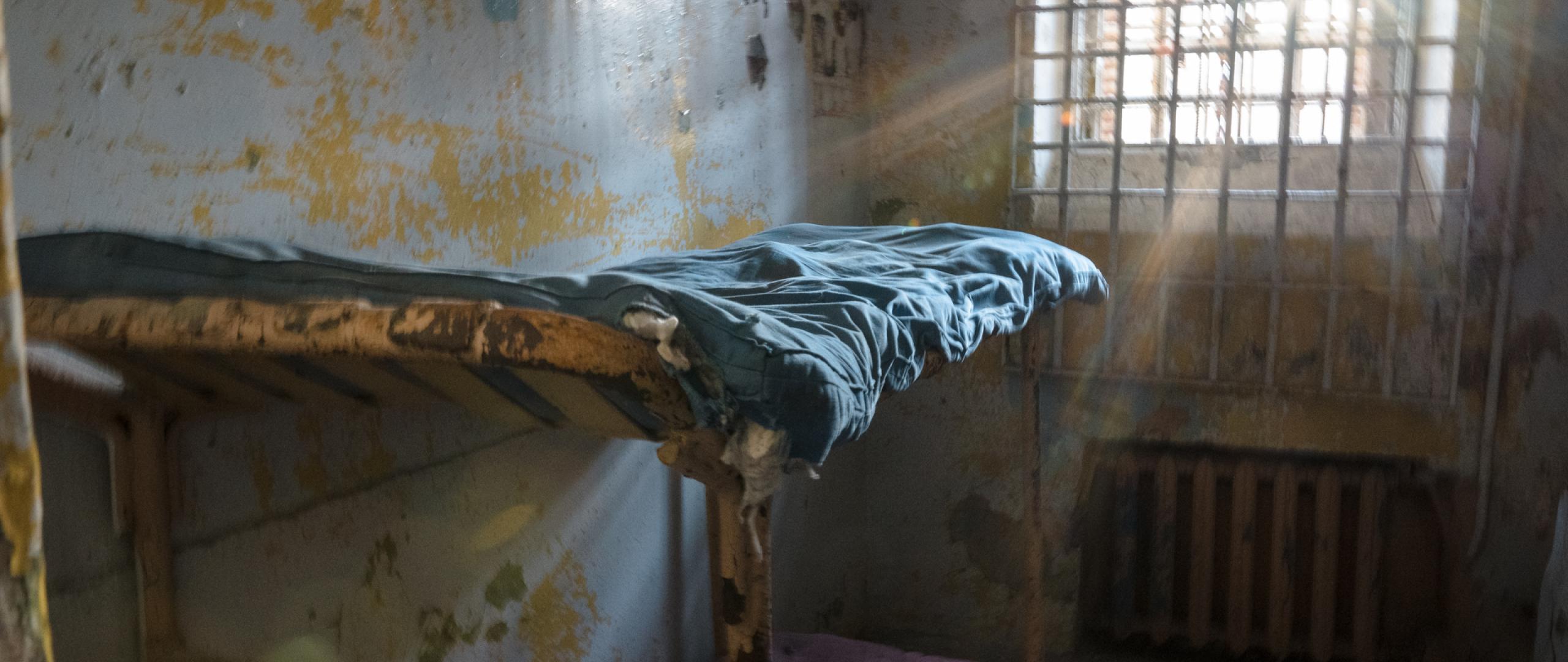Patarei as a Central Prison (1920-1940; 1991-2002)

The Toompea Castle as well as the Fat Margaret cannon tower burned during the revolutions of 1917. Both had been used as prisons and became uninhabitable after the fires. Therefore, the Patarei Casern was handed over to the newly established Republic of Estonia’s Ministry of Justice in 1919 and was put to use as a prison in 1920 after some reconstruction.
During the renovation, the building was enforced with internal walls, partitions, iron gates and occasionally even double bars. With its nearly two metre thick walls, the former fort was ideal for a prison. Turning forts that have lost its original purpose into prisons has been quite common around the world. The best known examples are the Tower of London and the Peter and Paul Fortress in St. Petersburg. Nowadays, both have become museums.
The central prison was opened in the Patarei complex in 1920. It was the largest in Estonia, housing around 1000 prisoners. The complex included a hospital, a sewing workshop, a printing and binding room, etc. The principle was that in order to save public money, prisoners had to cover their own living expenses.
Criminals, who had been convicted for anti-state acts, ended up in the prison in waves. They considered themselves political prisoners or prisoners of conscience. In a situation where the activity of the communist party was forbidden in the Republic of Estonia, the communists sought opportunities to undermine Estonia’s independence.
They were supported by the neighbouring Soviet Union and numerous communist figures. Soviet spies were imprisoned. In 1925 and 1926, a separate department was built on the first floor of the gorge for communists who served a life sentence, as their number had increased considerably. In mid-1930s, members of the Vaps (an association of the Estonian War of Independence veterans) movement were hit. In 1934-1935, they had been excluded from political life and widely imprisoned on charges of an attempted coup.
In the 1930s, Patarei was extended by two new departments: a comms building between the wings of the lunette and a solitary confinement cells’ building (for those serving a life sentence) on the east side of the gorge. Now, the normal capacity of the prison was approximately 1,200 detainees.
The number of prisoners who passed through Patarei in a year was much higher, because many who served short-term sentences had been transferred to labour camps in the countryside. Of Estonia’s ~1,1 million inhabitants, there were an average of 3,142 detainees per year in prisons in 1924-1933 and an average of 3,642 persons per year in 1934-1938.
During the interwar period of independence, executions of criminals, who were sentenced to death, were also carried out in Patarei. Normally, the person sentenced to death was given a poisonous drink. The penalty was carried out by hanging if the executee refused to take the poison.
Most of the detainees were common criminals, not political prisoners. On 7 May 1938, the newly appointed president Konstantin Päts declared an amnesty, releasing a total of 104 communists and 79 Vaps members from prisons. By the summer of 1940, in addition to ordinary criminals, there were 36 prisoners in Patarei that had been convicted for espionage in favour of the USSR, and 7 persons that had been convicted for other crimes against the state.
The authoritarian rule of president Päts did not correspond to what was and is considered democratic governance. Nevertheless, the policies of the so-called Era of Silence did not strike fear in the average citizen or even the political opponents (of imprisonment or severe punishment). The arrest and conviction of popular Vaps members was part of a post-coup campaign and they were released as the regime stabilised.
The situation was different with the communists: the activity of the Communist Party was banned since December 1918, i.e. for almost the entire interwar period of the Republic of Estonia.
After Estonia regained independence, Patarei was once again renamed Central Prison. The last death sentence was carried out in Patarei in 1991, after the restoration of Estonia’s independence. On 27 December 2002, Patarei’s 82-year history as a prison officially came to an end. In 2002, most Central Prison’s detainees were transferred to a newly opened prison in Tartu.